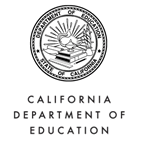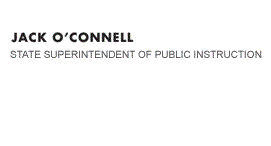Roundtable Purpose


Official Letter
Official Letter
October 15, 2008
Re-Visioning School Facility Planning and Design for the 21st Century
Creating Optimal Learning Environments
Roundtable Purpose
Kathleen Moore, Director
School Facilities Planning Division
California Department of Education
Comments
We are thrilled and honored that you have accepted our invitation to join us in a two-day discussion about the future of school facilities planning and educational design in California.
Each of you in the room is a leader in your area of expertise and we are humbled by your willingness to help the Department of Education support high quality learning environments for all students.
I especially want to than Superintendent O'Connell for his leadership in education and interest in school facilities as well as my Deputy Superintendent, William Ellerbee, who always puts students first.
I also want to thank the Office of School Transportation (OST) whose facility we are occupying the next two days. This office is part of my Division and I am so proud of the work they do to train bus drivers and to ensure our bus safety record in California continues.
We thought it important to hold this convening in public space -- and what better space than an adult learning environment opened this year after being housed for 40 years on the California Highway Patrol campus in a portable across the road. The OST staff has been fantastic in their collaboration with the facilities staff.
I want to thank the Roundtable Committee without which we would not be here today. As everyone knows a lot of work goes into these types of events and I am deeply indebted and appreciative to all the staff work to hold this event.
I would like to have all members of my staff stand. These are the consultants and the staff that do the day to day work or our office approving sites and plans and working with the public. We are here to contribute, to listen, and to open to your input.
I wish to thank the Center for Cities and Schools who are partners in this endeavor and without whom this event would not have been possible.
I would also like to recognize from all the different sectors represented here, please raise your hand -- students, teachers, facility professionals, administrators, policy makers (legislative staff), state agency staff, associations, advocates, architects and design professionals, researchers -- did I miss any?
And finally, I'd like to thank the Stuart Foundation whose generous grant made this day possible, especially the food!
We are now eight years into the 21st century. Most in this room will not see the dawn of the 22nd century, but many of the buildings that we have planned and constructed and renovated will stand that test of time.
That is why it is so important to take this pause moment as our country swirls in a bit of economic uncertainty and housing construction has slowed, if not halted, across the state, and declining enrollment has impacted many of our districts.
This moment -- to assess where we've been and where we need to be headed today and in the future -- I truly believe we are at a crossroads in school facilities. We know the focus must shift away from the industrial models or our past and position our facilities to be beacons of the information age where learning is personal, project-based, interdisciplinary, relevant, and connected to the local global community.
We aim to make far more visible the importance of the built environment's impact on educational quality for all students.
The voters have passed in excess of $78 billion in state and local bonds in the last ten years. Much of that authorization has been spent and yet much of it still remains.
While financing school facilities will undoubtedly be part of the discussion the next few days, I would like to steer the discussion to be about educational leadership and outcomes.
While financing school facilities will undoubtedly be part of the discussion the next few days, I would like to steer the discussion to be about educational leadership and outcomes.
We all need to come together around our work and passion for positive educational outcomes and opportunities for all students and translate that into the built environment where students feel welcome, respected and safe, and where teachers and staff have the space and the equipment to excel at their craft. where learning takes place all across the campus and into the community and not just those spaces we currently define as classrooms.
Our work over the next two days will be built upon the foundations of the work of many organizations, much of which we provided in the e-mail sent out last week -- the Council for Educational Facilities Planners International, the American Architect Foundation (AAF), the American Institute of Architects (AIA), and the researchers and practioneers we have invited to present and to provoke us as we work.
The Superintendent has challenged each of us at the California Department of Education to contribute to solving the achievement gap and the drop out rate that relegates too many young peoples' futures to economic uncertainty and reduced opportunity.
During the next two days you will be with us in that challenge as we set about the core three purposes for this Roundtable:
- To gain insight into the design of 21st century learning environments
- To identify the best practices that strengthen the relationship between schools and communities in an effort to close the achievement gap
- To develop a report to assist with the review and update of standards for school design in the California Code of Regulations, Title 5
I'd like to take a moment to review the context of our role within the system here in California.
There are four agencies with primary responsibilities:
- The California Department of Education - responsible for site and plan approval
- The Division of the State Architect - responsible for fire and life safety, access and structural safety led by David Thorman, the State Architect here today
- Office of Public School Construction - administrator of state bond funds, staff to the State Allocation Board, represented here today by Lori Morgan
- Department of Toxic Substance Control - ensuring school sites are clean and mitigated from environmental hazards, represented here today by Sharon Fair
There may be times where issues arise or the discussion involves these agencies, we will bike rack (the new, sustainable metaphor for the old parking lot) those issues and share with our fellow agencies, but we would like to concentrate our efforts around educational leadership in the areas where the California Department of Education can make an impact and a difference.
I'd like to direct your attention to the packets, briefly go through them and then we will hear about the format of the next two days.
In closing, I would like to reiterate the words of the Superintendent's written welcoming remarks that we are asking each of you to speak out openly and courageously and to discuss how you can help the California Department of Education and the students of California by improving school design. It's time to examine our beliefs, re-evaluate how we have been doing business and commit ourselves to getting even better results.
Again, we are honored that you have joined us and we look forward to a productive two days and the beginning of a process that will last over the next year as we vet -- beginning in February, the outcomes of this meeting with a report that the Centers for Cities and Schools will prepare for us.
